I am not proud to say that I used to assume that Saint Peter’s Basilica was just the biggest church in Christendom, the pilgrimage and gathering place of all Catholics in the world.
What I didn’t know is that not only it is actually one of the most incredible examples of Late Renaissance and Baroque art anywhere, but it is also a place that holds an unexpected secret…
Underneath it you can find The Vatican Necropolis, a first century necropolis (city of the dead), basically a roman cemetery where the actual Tomb of Saint Peter is believed to remain, still today.
Can you imagine stepping on actual Roman soil from 2000 years ago?
But just as importantly, knowing that along these corridors (antique streets) the first Christians walked and worshiped in a complete act of faith on what would become one of the most important religions of the planet.
As Rick Steves recommends when planning a trip to the Vatican: “Leave your —religion here— hat at the door and enter the magnificence of one of the most impressive and significant holy places in the world”.
You don’t need to be a catholic to appreciate this fabulous site.
Ok, how do we tackle this?
When thinking about the Vatican Necropolis under Saint Peter’s Basilica it became clear that the topic was so amazingly interesting, it’s going to need three posts to cover it.
To me there are three key aspects which I will convey:
- The background history of Rome at the time of the death of Saint Peter.
- The Necropolis itself as an archaeological site that reminds us of burials during the first century AD.
- The great mystery of the Tomb of Saint Peter and whether or not it is the real one.
 In any case, after thorough research I can honestly tell you not to go anywhere else, these three posts are your best resource online to understand the site from a visitor point of view!
In any case, after thorough research I can honestly tell you not to go anywhere else, these three posts are your best resource online to understand the site from a visitor point of view!
Why do you need them? Because when I went and ended my visit to the Vatican Necropolis (also known as the “Scavi”) and I left Saint Peter’s Basilica for the first time, I was kind of confused about what I actually had been shown.
My feeling is that some of you may have experienced the same. I hadn’t done my homework.
But fret no more, I’m here to do your homework for you and make it all clear!
Let’s start with…
A bit of Roman history
During the year 64 AD when crazy maniac Nero was emperor of Rome a great fire occurred that destroyed a large area of the city.
Many blamed the fire on Nero (who later built his Golden House over the destroyed area, hmmm, kind of suspicious, right?), who in turn blamed it on the Christians.
According to ancient historians, Nero started persecuting Christians to diffuse attention off him.
The Apostles Peter and Paul who were in Rome at the time, were executed in the circus (a very long race track with bleachers that could accommodate thousands of spectators, originally built by Calligula and used for horse races and shows) on the Vatican Hill.
The obelisk brought from Egypt that we see today in the middle of Piazza San Pietro used to be at the center of the circus.
It was moved to its current location in 1586 and remains here as a “witness” to Peter’s martyrdom.
Peter famously requested to be crucified upside down, since he thought he didn’t deserve dying in the same manner as Jesus.
Traditionally, it is believed that his body was buried just outside the circus, where a Roman cemetery stood.
His grave is said to have been marked by a red stone, symbolic only to Christians. After Peter’s death, Christians began to gather at this place to venerate the Apostle.
Some years later, a temple-entrance-shaped shrine (known as the “trophy”) was built.
Gaius Trophy at the Vatican Necropolis under Saint Peter’s Basilica. Photo: Fabbrica of Saint Peter’s.
A letter sent in 120 AD by a priest by the name of Gaius is the first written record that states that Peter’s remains were indeed in the Necropolis next to the circus.
In 319 AD, after converting to Christianism, emperor Constantine I erected the first Saint Peter’s Basilica, on top of Saint Peter’s original burial site, considering the holiness of this place.
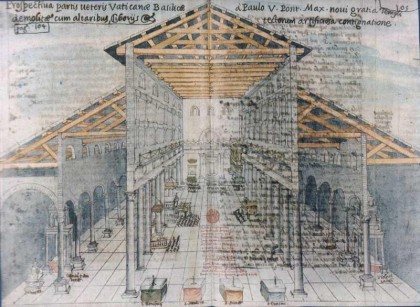
Reconstruction of Old Saint Peter’s Basilica. Photo: saintpetersbasilica.org
In the 16th century Old Saint Peter’s Basilica was dismantled to make way for the construction of the current church.
In 1939 Pope Pius XI sponsored the archaeological excavations allegedly because he wanted to be buried as close as possible to Peter the Apostle. This is how the Vatican Necropolis was revealed.
Where is the Necropolis?
The Vatican Necropolis is very much like other necropolis in Rome such as the ones in Ostia Antica and Isola Sacra, though smaller.
In this diagram you can see the plan of the current Basilica, the plan of the old basilica, Nero’s circus, and adjacent to it the Necropolis, right under the center of the current Basilica.
The circus ran next to a road called Via Cornelia. The Vatican Necropolis was on the other side of the road.
When Constantine started to build Old Saint Peter’s, he recognized the holy place of the Apostle’s tomb and decided to build the high altar on top of it, filling the rest of the Necropolis with dirt.
Old Saint Peter’s had a courtyard in front of it, and even though it was massive, as you can see in the diagram, it was smaller than Current Saint Peter’s Basilica.
Here’s a more detailed plan of the Necropolis in relation to the basilicas, see the Vatican Necropolis plan in red, the current grottoes (tombs of Popes) in green, the plan of current Saint Peter’s Basilica in purple and Old Saint Peter’s in blue.
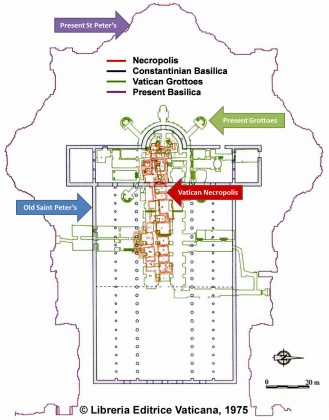
Vatican Necropolis, Circus of Nero, Old Saint Peter’s, current Saint Peter’s Basilica and Vatican Necropolis. Photo: Ad Imaginem Dei blog. 4.bp.blogspot.com
Here’s a 25-second video showing the depiction of an artist of how this site might have looked during the first and second centuries AD.
Though it’s not very precise, it does provide an idea of how big these monuments were.
Video music: J. S. Bach: Brandenburg Concerto No4-1 BWV1049 by Kevin MacLeod.
The tour starts
You get assigned a guide that will give you a tour first of the Necropolis itself, going through all the Roman tombs and finishing with a kind of confusing look at the Tomb of Saint Peter.
You cannot actually enter the mausoleums, you see each through thick glass at the door.
The tour goes through nearly fifteen mausoleums making its way up the hill before finally reaching the site of Saint Peter’s burial.
The Vatican Necropolis (remember that it’s also called the “Scavi”) is completely underground, the space is small and confined, dimly lit and a bit humid so one needs to remember that the ceiling of the Necropolis would actually have been open to the sky.
Also, I wouldn’t recommend this tour for people who suffer from claustrophobia though I can assure you, the place has proper ventilation.
You need to play close attention to what the guide is telling you, since this is a sacred place, they won’t raise their voice too much and you are expected to maintain the appropriate reverence as well.
The guide will generally advise you to hold questions until the end of the tour, which is a pain because as I’ve said, if you haven’t researched beforehand you are going to miss out on a lot of this great experience.
Here’s a fantastic 10-minute video that explains further the generalities of the Basilicas and the Necropolis.
What’s next?
In the next post I’m going to let you know about each of the mausoleums, how they’re laid out and what you’ll see, the touching decorations and the very interesting early Christian mausoleum, halfway between a pagan burial and a fully Christian tomb.
I will also share the practicalities for your visit.
In the final post, we’ll uncover the confusing passageways surrounding the Tomb of Saint Peter and I’ll show you exactly where and what to look for in order to recognize just where Peter is buried.
Look forward to those during the week!
Have you visited the Vatican Necropolis? What was your experience? What did you feel?
Could you relate to these people from ancient time and their remembrance of their dead?
Share your comments in the field below!
Or join the conversation in Facebook!



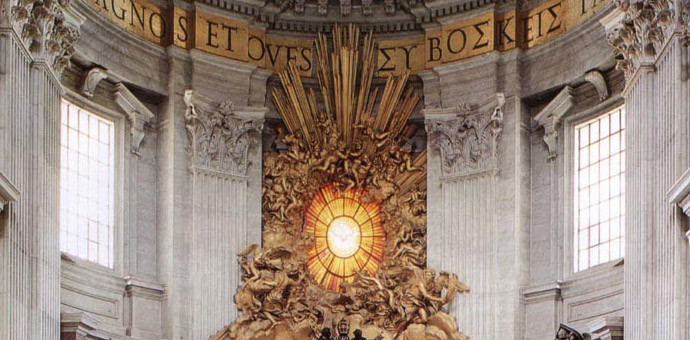
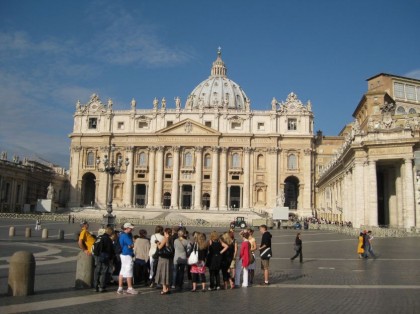
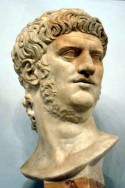
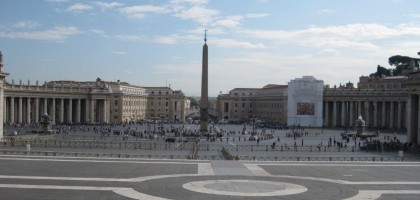
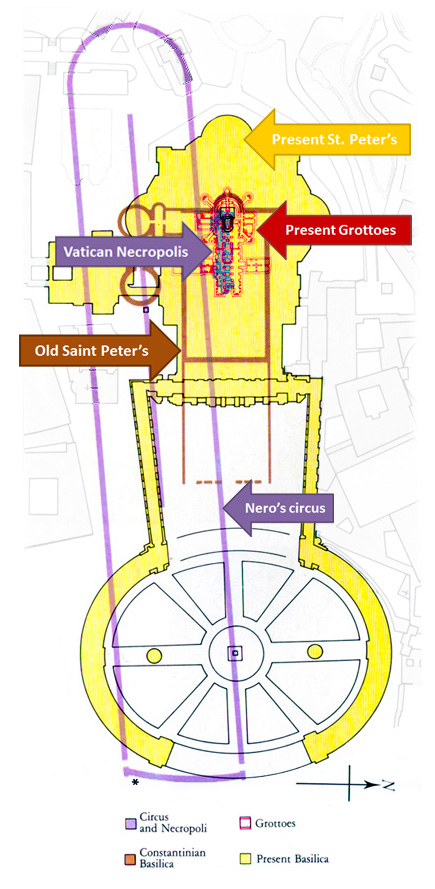
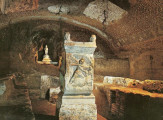
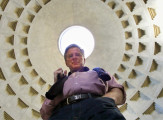
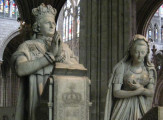

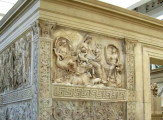
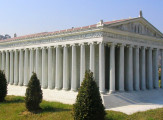

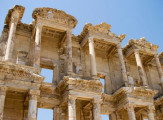
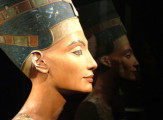
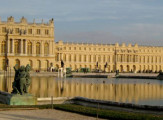


















Excellent article but I should like to point out that Paul was executed elsewhere according to the written account, and not mentioned at this site. Also, no evidence of bleachers here. It was a private track very long but not exactly the Circus Maxamus.
Thank you, Robert! Very interesting comment!